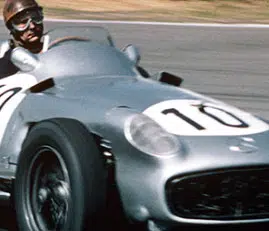Paul Ricard, July 2nd
Following two weeks after the Swedish G P, the immediate topic o f interest at the flat and featureless Paul Ricard autodrome was the matter of the cooling extractor fans on the Brabham-Alfa Romeos. Instant action was taken by the Formula One Constructors’ Association and the C SI and the outcome was that they were declared to be illegal, but the results of the Swedish race were to stand. In consequence the Brabham team appeared in France with the same two cars, Lauda (BT46/6) and Watson (BT46/4) without the fans and all the cowling and back in the form in which they raced before Sweden, with front-mounted water radiators. The rest of the entry was more or less as seen previously, with numerous small modifications to some of the cars, described elsewhere in this issue.
With the circuit being long enough to accommodate everyone for practice there was no need for any pre-practice seeding o f the “ rabbits” and all 29 drivers were ready for the Friday morning practice session from 10 a.m. to 11.3 0 a.m. The Ensign team had replaced Ickx with the Irishman Daly, the Finn Rosberg was still number two in the A T S team, and Giacomelli was driving the third works McLaren. The morning was hazy and ominously still, with almost total cloud cover as practice began, not at all the travel agent’s idea o f the South of France, but nonetheless ideal for fast motoring, providing it remained stable. The circuit had not been used for Formula One since 1976, when Hunt set the fastest practice lap in 1 min. 47.89 sec. with a M cLaren M 23, and fastest ever was Lauda (Ferrari T 2) in 1975 at 1 min. 47.82 sec.; of little interest in view o f three years’ progress. The official lap record was set up during the 1975 French G P by Jochen Mass in a M cLaren M 23 at 1 min. 50.60 sec. The vastness o f the pit area at Paul Ricard, and the comic, circus-like layout whereby half the field come into their pits under a bridge, while the other half are passing over the bridge on their way out of their pit area, makes the whole scene very remote and detached. Add to this the fact that the track itself and the signalling wall are so far from the pits that they could be on another circuit, and it is easy to see why practice at Paul Ricard is all a bit detached and characterless. The morning had not really got under way before a sprinkling of raindrops came down, and that was it, the cars were covered up and everyone disappeared, and at that point Lauda was holding fastest time with 1 min. 45-52 sec., but in truth the scene had not really got under way properly. The rain spots did not develop so everyone re-appeared and got on with practice, though there were damp patches on the circuit, which prevented any all-out 100% laps, so no-one approached Lauda’s time. Andretti had an almighty spin when he hit one of these damp patches, which bounced the Lotus 79 over a kerb and up into the air, to land on its nose, all at 130- 140 m.p.h. The nose of the car was crumpled and the forward part of the monocoque was distorted, but during the lunch-hour the Lotus lads hammered it reasonably straight and reset the front suspension as best they could, but there was no way of removing the crease in the aluminium panel over the front of the cockpit.





